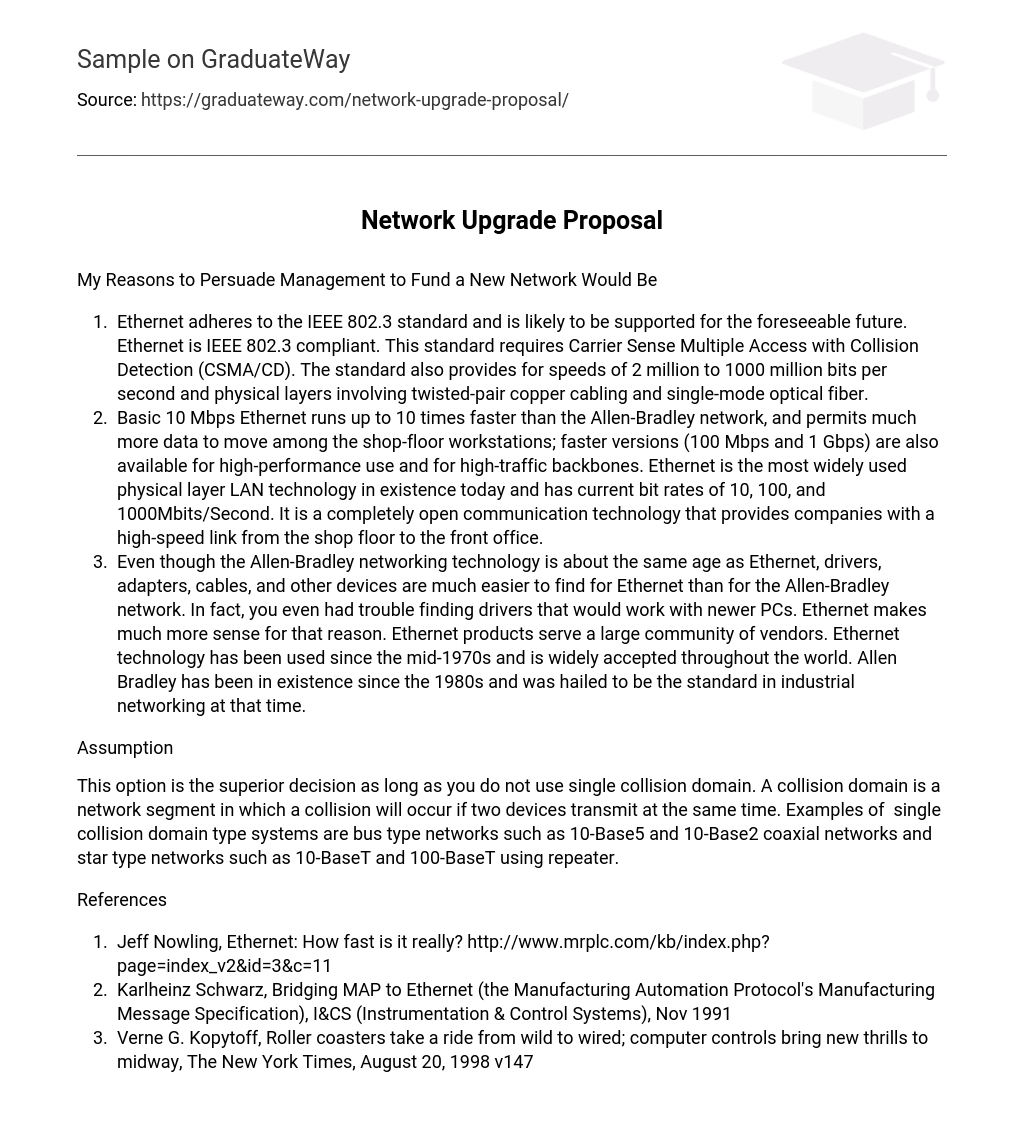My Reasons to Persuade Management to Fund a New Network Would Be
- Ethernet adheres to the IEEE 802.3 standard and is likely to be supported for the foreseeable future. Ethernet is IEEE 802.3 compliant. This standard requires Carrier Sense Multiple Access with Collision Detection (CSMA/CD). The standard also provides for speeds of 2 million to 1000 million bits per second and physical layers involving twisted-pair copper cabling and single-mode optical fiber.
- Basic 10 Mbps Ethernet runs up to 10 times faster than the Allen-Bradley network, and permits much more data to move among the shop-floor workstations; faster versions (100 Mbps and 1 Gbps) are also available for high-performance use and for high-traffic backbones. Ethernet is the most widely used physical layer LAN technology in existence today and has current bit rates of 10, 100, and 1000Mbits/Second. It is a completely open communication technology that provides companies with a high-speed link from the shop floor to the front office.
- Even though the Allen-Bradley networking technology is about the same age as Ethernet, drivers, adapters, cables, and other devices are much easier to find for Ethernet than for the Allen-Bradley network. In fact, you even had trouble finding drivers that would work with newer PCs. Ethernet makes much more sense for that reason. Ethernet products serve a large community of vendors. Ethernet technology has been used since the mid-1970s and is widely accepted throughout the world. Allen Bradley has been in existence since the 1980s and was hailed to be the standard in industrial networking at that time.
Assumption
This option is the superior decision as long as you do not use single collision domain. A collision domain is a network segment in which a collision will occur if two devices transmit at the same time. Examples of single collision domain type systems are bus type networks such as 10-Base5 and 10-Base2 coaxial networks and star type networks such as 10-BaseT and 100-BaseT using repeater.
References
- Jeff Nowling, Ethernet: How fast is it really? http://www.mrplc.com/kb/index.php?page=index_v2&id=3&c=11
- Karlheinz Schwarz, Bridging MAP to Ethernet (the Manufacturing Automation Protocol’s Manufacturing Message Specification), I&CS (Instrumentation & Control Systems), Nov 1991
- Verne G. Kopytoff, Roller coasters take a ride from wild to wired; computer controls bring new thrills to midway, The New York Times, August 20, 1998 v147





